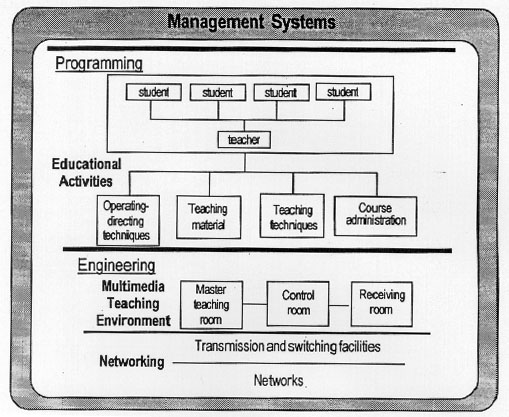
Diagram 1: Infrastructure of interactive Distance Education up
Interactive distance education programs in Taiwan can mainly be grouped into two areas: instructional network and computer-based virtual classroom. Colleges in Taiwan are currently offering courses through the experimental instructional network. The network connects seven national universities by DS-3 lines, and then with twenty-three others by T1 or ISDN lines. Using cable TV systems to deliver courses has also been tried in campus scope. Courses delivered by the computer-based virtual classroom method have been separately experimented by a few universities. Computer-based material can be used to teach course on line, or be a supplementary learning aid to an instructional network. Both systems are emphasizing on interactivity among teachers and students. The ideal is to continue teacher-student interactive relationship that occurred in traditional classroom setting, and furthermore provide unrestricted time and space for interaction through computer networks. In this paper, we will introduce the infrastructure of interactive distance education in Taiwan, including networking, multimedia teaching environment, educational activities, and management systems.
With fast development in computer and communication technologies, broadband and high-speed networks take telecommunication services into a promising future. People will then be benefited in terms of closer human relationship, faster information exchange, equal opportunity, resource sharing, and hopefully improving understanding among nations, and leading to a peaceful world.
Since July 1995, Taiwan joined the world effort in constructing National Information Infrastructure (NII). Among the seventeen pilot projects of the NII, the interactive distance education project is a collaborated effort of Ministry of Education, and Ministry of Transportation and Communication, Taiwan, ROC. Then, seven national universities in Taiwan are engaging in initiative programs. They focus on establishing instructional systems of different communication carriers, computer-based virtual classroom systems, and developing multimedia course material. Funds for the programs are mainly from Ministry of Education, National Science
Council, and universities themselves. Presently beyond the seven pilot universities, there are twenty-three other schools joining the project, by exchanging courses via the experimental instructional network.
Total of thirty schools are linked in the network; together there are twelve credited courses, including one in computer engineering, one in computer-based design, three in science, two in medicine, and five in liberal art. Total of students is about six thousand. Last semester, the seven pilot universities together offered nine courses, including one in communication engineering, two in computer information, one in law, two in science, one in medicine, and two in liberal art. There were about twelve hundred students. The levels of the liberal art, science, law, and medicine courses are for the first and second-year undergraduates. The engineering and computer science courses are for juniors and seniors.
Interactive distance education is not only for regular degree programs; it could be most useful for on-job training and life-long learning programs. Due to busy schedule, heavy traffic, long distance, child care, and etc., attending class becomes a major effort. Therefore, distance education opens up easier ways for obtaining education. Furthermore, interactive distance education allows students to ask questions right in classroom, and also communicate with teachers via Internet. In addition, it provides efficient and effective channels for exchanging courses among countries.
INFRASTRUCTURE OF INTERACTIVE DISTANCE EDUCATION
Comparing with traditional blackboard classroom teaching, interactive distance education is much more complex. Its success is not depending solely on teacher's teaching skills. It must be a team work. Diagram 1 shows the infrastructure which consists of the four main portions. Networking is at the bottom; it lays out course delivery areas with communication networks and facilities. Next layer up is multimedia teaching environment that is used for conducting educational activities. Then, it comes to design and implementation of educational activities. Finally, management systems organize and govern operations of the entire structure.
Each of the four main portions has a set of complicated operations within itself. Networking layer deals with communication technologies, such as network construction, transmission equipment, network control and management, and related physical establishment, to ensure smooth connection for course delivery. Multimedia teaching environment mainly covers audio/video and computer technologies, such as A/V facilities, video processing, echo handling, computer-aided instruction, room design, and related setups, to bring an educational activity to the best of its presentation. Educational activities focus on two main issues: teaching techniques, and production of computer-based teaching material. Teaching techniques emphasize on interactivity among teachers and students located at remote sites, with two means: (1) two-way, real-time instructional systems, (2) computer tools, such as e-mail, bbs, www. Computer-based teaching material is powerful in two folds: (1) clearer, colorful presentation, (2) easy access for review and homework assignment. For all of the above, management systems must provide seamless interfaces in support of day-to-day operations. The most important issue here is to build in necessary mechanisms for obtaining administrative, financial, and instructional resources in a long-term basis. Each of the four main parts will be described in the following paragraphs.

Diagram 1: Infrastructure of interactive Distance Education up
NETWORKING
Taiwan island is divided into four main concentrated areas: northern, western, eastern and southern areas. The west and east regions are separated by the highest mountain in Taiwan. Usually a university in each area is delegated to be a network center for Internet connection. The networking structure of the instructional network more or less follows the same map. As shown in Diagram 2, the Taiwan project currently uses DS-3 lines connecting the seven national universities from north to south, then uses ISDN connecting to other twenty-three schools. Transmission and switching systems under experiments includes DCC/DS-3 CODEC system (Digital Cross Connect/DS-3 Coder-DECoder system, which was developed by the Telecommunication Labs., Chung-Hwa Telecommunication Company), ATM (Asynchronous Transfer Mode) switch/AVA-ATV system, and various ISDN (Integrated Services Digital Network)/T1 video conference systems.
The DS-3 CODEC/DCC system has existed in many years. The original DS-3 network has connected the two universities, Science-Based Industrial Park, and Industrial Technology Research Institute in Hsinchu to form the first experimental instructional network in Taiwan, since 1991. National Chiao Tung University, which was the first organization in Taiwan involved in interactive education applications, has been using it to provide training programs for engineers in the evening. Since the Taiwan NII project started in July 1995, the network has been extended to Taipei, using for regular credited courses taken by college students in northern Taiwan area. The DCC system is an old system with very limited signal compression, no data communication capability, not-very-user-friendly switching system. It usually takes only two NTSC video signals on a T3 bandwidth (45 Mbps).
The ATM systems have also been under experiments for offering courses in southern Taiwan area, but mainly on point-to-point connection. The ATM system has obtained the most attention among academic researchers. However, it is still in early stage for practical use, considering video delay and jitter, multiple-points connection, product availability and price. Due to high availability of ISDN network, cheaper communication fee, and various mature products, the ISDN/T1 video conference systems have attracted a lot of attention in the past year. Many schools are now joining in the instructional network by ISDN 384Kbps. We are expecting a growth of remote sites as decline in the prices of room-based ISDN systems and more low-price desk-top ISDN products become available, in next few years.
HFC (Hybrid Fiber/Coaxial) network has opened up another road for interactive distance education. As shown in Diagram 3, fiber connects headends for long-distance transmission; then, coaxial cables link to individual houses. It is most used for cable TV networks. As for applications on distance education, it can be an excellent carrier because of broadband capability, and covering hundreds of home. Interactive distance education requires underneath network to have capacity for transmitting return signals. However, in Taiwan, almost all cable TV networks so far have only one-way broadcasting systems. In view of Internet business, cable TV industry is gradually moving toward the HFC structure with two-way communication. We are looking forward to the improvement, and seeing the instructional system on HFC network in the near future. For a R&D project, National Chiao Tung University has built a five-points HFC network connecting three buildings, and is developing a center-network-control system for interactive applications.
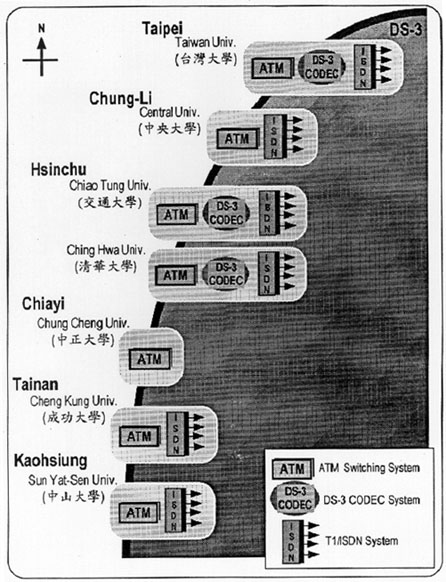
Diagram 2: Taiwan Interactive Distance Education Project up
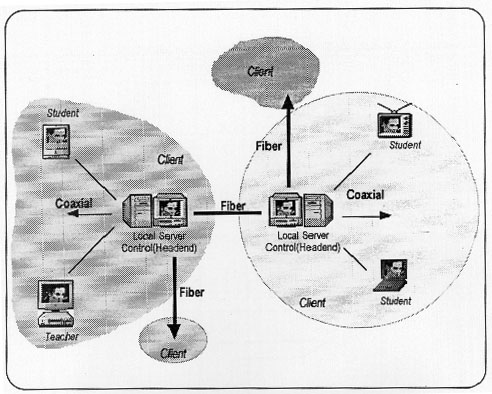
Diagram 3: Hybrid Fiber/Coaxial Network up
MULTIMEDIA TEACHING ENVIRONMENT (MTE)
Establishment of a MTE needs collaborated work of multiple disciplines, including audio/video, communication engineering, broadcasting art, computer information, and education. It is the stage for educational shows. In general, there are three types of space to form a MTE: master teaching room, receiving room, and control room. Teacher is in master teaching room; some students are in the same room as teacher, and some in remote receiving rooms; operators (or called course directors) sit in control rooms. Depending on room functions, necessary equipment and furnishings are installed. Costs of MTE facilities could run to be very expensive. Combination of higher quality and lower priced equipment should be considered and carefully arranged. Even though the dream is to have students take classes at home, the reality is to establish local sites for students' convenience, at this time.
In Taiwan, for instance, the most established MTE is at National Chiao Tung University as briefly potted in Diagram 4. The objectives of the establishment are to (1) ensure clear view of teaching material, and teacher's/student's body languages, (2) provide teachers with an array of equipment for course presentation, including two kinds of computers, document camera, video-tape recorder, audio-tape recorder, CD/LD player, and slide-projecting box, (3) set up user-friendly environment, such as easy access to microphones and screens, comfortable lighting and audio volume, (4) minimize number of operator, one person per location.
Internet connection is also a part of MTE. Real-time, face-to-face interaction among teacher to student, and student to student, is accomplished via monitors and microphones. Outside classrooms, they will use Internet functions like bbs, www, and e-mail to achieve unlimited discussion sessions, information sharing, and collaborated learning. Furthermore, material taught in classroom is loaded into computer servers; and, students then can review as many times as they wish. Collecting and grading of homework assignments can be conveniently done through Internet.
As mentioned in the previous paragraphs, the other system of interactive distance education is computer-based virtual classroom. Its course material does not consist of only outlines, but self-contented lessons. Students study at their own paces in front of computers, and interact with teachers via again Internet functions. We can include the course material of virtual classroom to be part of study for students attending the instructional network. The combination of the two systems would create an optimal learning condition.
EDUCATIONAL ACTIVITIES
Educational activities involved in interactive distance education basically have four categories: course administration, course material development, teaching technique development, and operating-directing technique development. In the already described portions of the infrastructure, the engineering work establishes reliable and multi-functional physical facilities. Engineers will then be expected to do system maintenance once a while. Not like the engineering, educational activities involve administrators, teachers, course designers, computer programmers, art designers, operators, and students. They are using the physical facilities to implement teaching and learning processes. Hence, the infrastructure from this point on mainly deals with human involvement.
The first category is administrative coordination for distance education. Course administration consists of course scheduling, student registration, course/student database management, course-material printing and mailing, and related work. Interactive distance education has similar administrative requirements as traditional one. The second and third categories together produce effective instruction and promote learning quality. These are the goals of education. Here, we would emphasize on computer-based course material development, and interactivity of teaching techniques. With use of computer and proper software, black and white lecture-notes can become eye catching and enjoyable. The purpose of making graphical and meaningful material is to improve student's understanding; that is, a picture worth a thousand words. In addition, media, like video tape and LD/CD, can also bring visual and audio experiences for students, as well as displaying real objects or models. It is necessary for teacher to know what kinds of equipment are available, and basic formats or guidelines for producing material on those equipment. So, teacher has the same knowledge as course designer, art designer, and programmer. Some teachers might prefer to prepare teaching material themselves; but some might not. Thus, basic layout of material has to be identified and known to teacher, designer, and programmer, in order to have a smooth developing process.
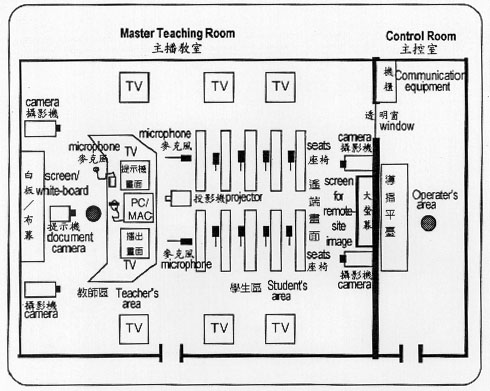
Diagram 4: Multimedia Teaching Environment at National Chiao Tung Univ. up
The unique feather in the third category, comparing with one-way broadcasting distance education, is the capability of two-way, real-time communication. On the other hand, it is different from blackboard classroom setting, in terms of teaching styles and some students located at remote sites. To develop a new set of teaching techniques for the instructional network is essential in order to achieve much better learning result. Students, for example, can ask questions and receive answers right in classroom. However, both too many and too few questions from many remote sites would affect course quality. When too few questions, teacher has to encourage interactivity. When too many questions, teacher will apply order. Other teaching techniques, such as cross-sites' group discussion, homework presentation, quiz, body languages, are interesting subjects for further experiments.
As described in the previous paragraphs, the goal is to have one operator per site. An operator's job at master teaching room is to work with teacher for course delivery. He or she will operate on A/V equipment, taking images from all sites, producing proper, or even artistic, pictures, and then send to all sites again. During interactive sessions, the operator will also handle switching device. It really becomes too much work for a person when there are many remote sites linked. An operator at receiving site has considerably less work; the busiest time is to catch student's image while he/she is talking to teacher. Often, we would produce split-screen pictures to show people involved in conversation. This requires two operators' cooperation. Since there is no equipment like intercom available, operators basically don't talk to one another during lessons. Then, it is difficult to take split-screen scenes. With ISDN video conference systems, an operator at master teaching room could remotely control cameras at a receiving site. It is interesting to see how useful it would apply in case of interactive education applications.
MANAGEMENT SYSTEMS
Operations of interactive distance education require a long-term commitment of administrative, financial, and instructional resources. It requires substantial commitments of staff and money before school will receive adequate income to justify initial investment. Thus, long-term commitment of top-level management is essential.
To ensure coordinated operations within the infrastructure, management systems are the rules of the game. they are basically divided to deal with financial, personnel, marketing, legal, and operational issues. Management systems for the first four issues are placed at the top level of administrative capacity. The operational management has at least two levels: different systems for different parts of the infrastructure, and an organizational system to govern seamless interfaces within the infrastructure.
Without inventing new wheels, existing administration and management systems in universities could accommodate operations of interactive distance education, especially in early establishing stage. Doing so, it is not only utilizing existing staff and reducing financial burden, but also most importantly inviting experts from different disciplines to join the work. Diagram 5 shows one possible arrangement for the existing departments to support the different tasks of interactive distance education. Engineering functions, concerning networking and multimedia teaching environment, can be handled by computer center. The mission of computer center is to serve an entire school; and it often has resources for computer networks, computer engineers and technicians. Faculties and students from broadcasting and/or communication departments are welcome to join the work.
Programming functions for educational activities are possibly organized by three departments: registrar for regular courses, continuing education office for training courses, and multimedia production office for developing teaching material and techniques, and delivering courses. Marketing functions promote interactive distance education, and to increase student enrollment. They could be integrated into current promotion channels of universities. Finally, administrative functions include finance, personnel, planning, and copyright. These fit right under existing university systems.
Current Taiwan programs on interactive distance education are financially supported by the government. Because of decline in funds each year, universities are soon to face running instructional systems according to cost/benefit analysis. However, instructional courses can be justified on many grounds, some of which are not measurable in dollar returns. For example, instructional network provides for people who otherwise might not be able to attend classes because of inconvenient location, handicap, child care, and etc. For the other case, cable-televised courses may add significantly to a university's visibility in the community.
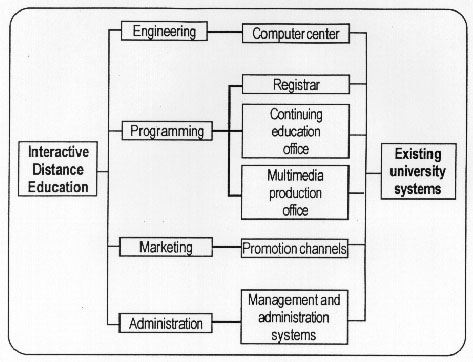
Diagram 5: Existing University Systems for Interactive Distance Education up
CONCLUSION
Interactive distance education provides educators with promising tools for creating better instruction and better human relationship. Instructional network systems, utilizing broadband and high speed networks, deliver courses to students at a distance, in a real-time, and multimedia fashion. Computer-based virtual classroom systems use Internet to reach students around the world. The experience of the Taiwan project is positive. It is hard work; but, it is challenging, exciting and significant. National Chiao Tung University, as a pioneer in the development of Taiwan interactive distance education, has realized the importance of the infrastructure. Our continuing work, besides engineering and programming, will emphasize on management systems. Systematic operations are essential for building strong bases to achieve goals and prosperity.
REFERENCES
Freed, L. & Derfler, F. J., JR. (1994). Building The Information Highway, ZD press.
Heinich, R. et al. (1993). Instructional Media and the New Technologies of Instruction. Macmillan College Publishing.
Houdek, E. (1990). Managing Distance Education Courses. A Publication Prepared by the University of Illinois at Urbana-Champaign.
Hudspeth, D. & Brey, R. (1986). Instructional Telecommunications: Principles and Applications. NY: Praeger.
Kemp J. et al. (1994). Designing Effective Instruction. NY: Macmillan College Publishing.
Laurillard, D. (1993). Rethinking University Teaching. London: Routledge. Markowitz, H. (1990). Distance Education: Staff Book. University of Illinois.
Moore, K. (1995). Classroom Teaching Skills, 3rd ed. NY: McGraw-Hill.